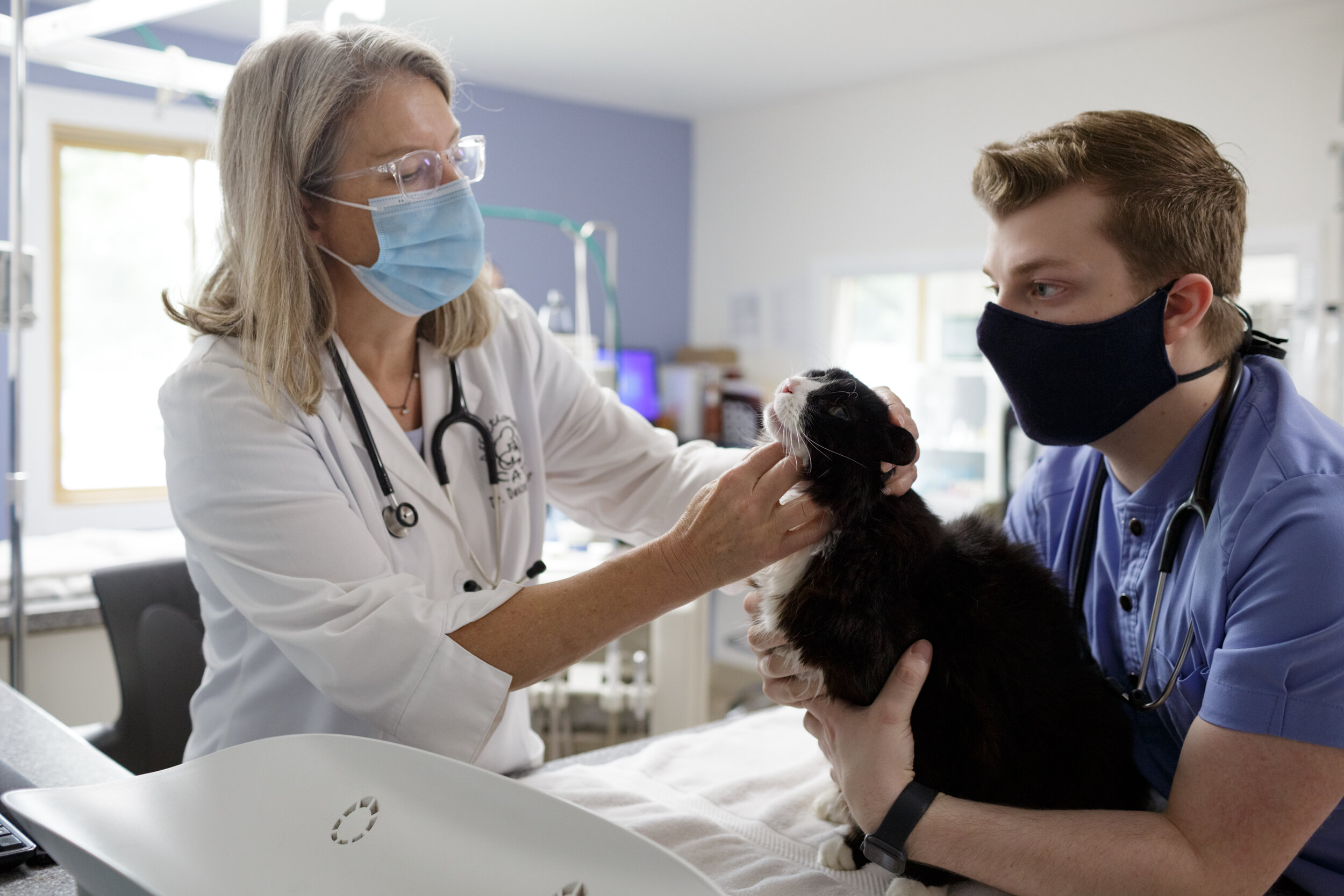
Weight Management
Obesity affects more than 50% of America’s pet population and can lead to serious health problems such as breathing difficulty, arthritis, heart disease, and diabetes.
A Body Condition Score (BCS) can help you determine if your cat is overweight. By running your hand over your cat’s ribs, you can estimate how much fat is covering the bones. Ideally, the ribs should be palpable but not visible, the waist should be visible but not prominent, and excess fat around the shoulders, stomach, and tail should be minimal.
There are several things you can do to help an overweight cat lose weight.
Switch to a high-quality canned food diet: Cats are designed to eat small birds and rodents, which are high in water and protein and very low in carbohydrates. However, most dry foods are low-water and high-carbohydrate, which makes them convenient and cheap, but also unhealthy. Most overweight cats lose weight when fed a high-quality canned food.
Limit food intake: Cats with unlimited access to food often eat more than they need.
Feed smaller meals more often: In the wild, cats eat 10-15 small meals throughout the day; mimicking that by feeding your cat three or four times a day burns more calories and keeps your cat fuller than one or two large meals.
Exercise: Encourage your cat to move by establishing regular playtimes with his favorite interactive toys or frequently changing the locations of his food bowl.
It is very important that your cat not lose too much weight too quickly (no more than a ¼ lb. a week, or 1 lb. a month) to reduce the risk of causing dangerous complications such as hepatic lipidosis (fatty liver disease). Weekly weigh-ins, either with the vet or at home, will help you track your cat’s progress. We recommend weighing your cat on a baby scale for accuracy.
Managing your cat’s weight with good nutrition, exercise, and regular check-ups will be a long-term commitment, but will lead to a healthier life for your cat and lower veterinary bills for you.
